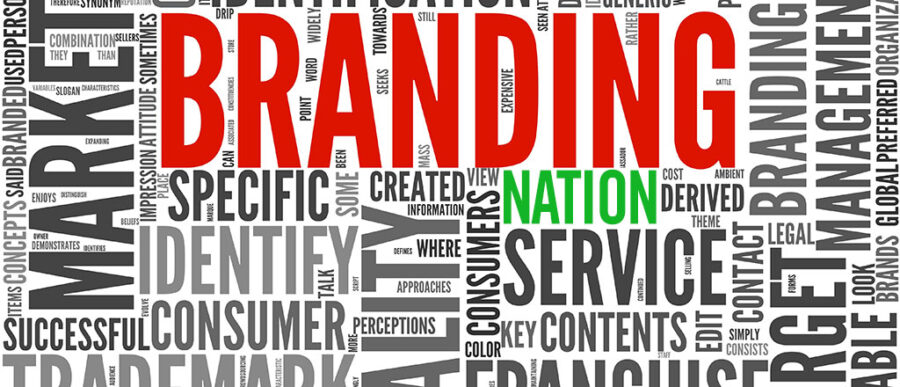Companies carefully nurture their brand names because they know it affects business: A good name can bring in higher returns. Is it time for countries to cultivate their own brands? In this opinion piece, Wharton marketing professor David Reibstein explains that nations should pay attention to how they are perceived by others. Countries that figure out how to enhance these perceptions could create a large economic benefit. As part of his work in this area, Reibstein has collaborated with U.S. News & World Report and BAV Consulting “to answer the question of what makes a best country to produce the Best Countries rankings.” The rankings were released today at the World Economic Forum in Davos, Switzerland.
Companies are fully aware of the economic value of their brands and manage them carefully, and branding consultancies regularly publish rankings of global brands based on their estimated value. Given our ever-increasing global interactions and exchanges, is it time for the same to be applied to the branding of nations?
Can Nations Be Brands?
Procter & Gamble produces a number of products we are all familiar with — Crest, Scope, Head & Shoulders, Tide, Pampers, just to name a few. Each of these products has a brand name that the company has been more than willing to invest in. P&G spends billions to create awareness and perceptions of its brands. Why does P&G advertise to help consumers understand that Crest reduces decay prevention? They don’t do it solely to make us better informed. They do so because there is a good return to the company if we are aware of Crest and have a positive association with its properties. This return is reflected by P&G’s ability to charge a premium price for Crest and perhaps even increase sales of the product. Most companies gain their return for their brand development through a combination of the two.
In the same sense, nations and geographies such as cities, states and regions have brand associations as well. Brands are perceptions that people have of the region — anticipation of what they can expect. We certainly have perceptions of regions or states, and even cities. Colorado is known as ski country and the wide expanse of Montana makes it “big sky” while Georgia is the “peach state.” Las Vegas is viewed as an adult playground personified by the advertising tagline, “What happens in Vegas, Stays in Vegas.” Actually, at one point, Las Vegas tried to change its image to more of a family-oriented venue, featuring the MGM Grand amusement park. But the city discovered that it was hard to change a brand’s image and also compete with Disney. Hence, it reverted back to its earlier campaign.
Dubai, one of the Emirates of the UAE, had very little global awareness not that many years ago. But it has transformed its image to become a destination point for many — both for tourism and foreign trade, given their free trade zones.
“Documenting the global perception of nation brands is the objective of this inaugural rating of nations.”
Attaining a National Brand
Consumer products primarily attain their brand perceptions from experiences people have with them, and in an era of social networks, experiences others have with these goods as well. Singapore Airlines is recognized as one of the best airlines in the world. Some of this prestigious image came from advertising, to be sure, but much of it undoubtedly was attained from travelers’ experiences with the airline and positive word-of-mouth to attract other passengers. Advertising, price, distribution, packaging and other marketing elements also play a role.
Similarly, we have perceptions of countries based on our experience as tourists, customers, investors, followers of global news and social media, and what we hear from others. We learn and develop generalizations about various parts of the world – for example, products from Italy are considered quite stylish; people in Brazil are very friendly; the Turkish coast is amazing; and doing business in India can be complicated. These opinions are based on our experiences and what we have learned from others.
Countries that want to influence the world’s perceptions about them try to shape our impressions through such things as tourism bureaus, chambers of commerce, foreign trade administrators, among others — just as businesses try to influence customers’ perceptions of their brands through advertising. There is good reason for doing so: Attracting more businesses, trade, exports, investments and tourism strengthens a nation’s economy.
At the city and state level, we all know about New York’s “I Love New York” campaign and Virginia’s “Virginia is for Lovers” ad slogan. More recently, India has begun promoting its “Made by India” campaign and China has been touting its “Work with China” tagline. In the same way that personal selling and direct advertising of consumer products aren’t readily visible to the general public, nation-branding efforts are not as outwardly visible since these generally are directed at the business community to encourage economic development, investment or trade.
Perceptions of nation brands are derived from all sorts of experiences. Some of this is derived from the products countries produce and export all around the world. Germany is well-known for its development of excellent automobiles, and hence thought of as superior in engineering. Italy is known for fashion, Switzerland for banking and watches, China for low-cost manufacturing and Scandinavian countries for their dairy products. Some companies take advantage of their nation’s positive brand image by promoting the country of origin along with their brands and products. For example, Swiss Army Knives or German engineered BMWs.
“It is an issue beyond national pride. A nation’s brand affects its economy — it matters what others think about us.”
This does not always work in a positive direction if the nation is not particularly known for excelling in certain areas. I would contend that the company name Lenovo was created to make it less apparent that it manufactures in China, as the name does not sound very Chinese. This is probably wise as China hasn’t been particularly known for being reliable or technologically innovative. Similarly, Häagen-Dazs ice cream is a brand name that most consumers associate with Scandinavia, and hence carries a positive, wholesome dairy association. But it’s actually manufactured in New Jersey, which is not particularly known for its dairy products.
A nation’s brand image affects many other aspects of its economy beyond simply exports. There are some countries that are known for their capabilities in innovation or intelligence/security, such as Israel, or for their low-cost manufacturing capabilities, such as China and India. These capabilities could have arisen because of their human or natural resources, such as oil from Saudi Arabia or Russia, or diamonds from South Africa. These perceptions, often borne from reality, lead to commerce in a variety of forms. Perceptions about a nation’s capabilities within certain product categories also lead to increased exports of these products, such as shoes from Italy, beef from Brazil, or electronics from Japan.
Dimensions of a Nation’s Brand
What dimensions help form a brand image? It differs by category. If we measure people’s perceptions of toothpaste along a number of attributes, we would find the evaluation centering around two primary dimensions — whitening/brightening and decay prevention. Measuring people’s perceptions of nations reveals more complexity, which is reflected in more dimensions that emerge. The central dimensions that drive people’s view of nations can be reduced to nine general categories: Adventure, Business Ready, Cultural Clout, Global Citizenship, Innovation & Entrepreneurship, Quality of Life, Power & Influence, Values & Heritage, and Differentiation.
To be sure, it is possible for a nation to be perceived as strong in one dimension and weak in another. Brazil might be viewed as strong on Adventure, but not necessarily strong on Innovation & Entrepreneurship. Sweden might be viewed as one of the best nations in terms of Quality of Life, yet not necessarily dominant in Power and Influence. The individual perceptional dimensions correspond more to certain parts of a nation’s economy than to others. For example, being perceived high on Adventure clearly supports greater tourism while a high perception of Innovation & Entrepreneurship correlates with high foreign direct investment. Differentiation and Cultural Clout are both positively associated with foreign trade. In short, the perception of a nation’s brand has a direct influence on its economy.
“Our actions, visible on a global scale, have economic consequences far beyond the direct cost of those actions.”
Under each of these dimensions are the attributes used to assess the nation. For example, Adventure consists of excitement, friendliness and culture, among other features. For a country to reposition its image, it must change the perception of the underlying attributes of the dimension — level of excitement, friendliness and culture. How? Not merely by citizens becoming more exciting and friendly. The key is to change others’ perception — through actual visitors’ experiences, blogs, ratings provided by travel sites such as TripAdvisor.com and Lonely Planet — and supported by advertising and public relations efforts. But even in a successful repositioning campaign, change will not happen overnight; it will take time and repeated efforts. Once the perception of a country starts to shift, tourism should see an increase.
To understand how its nation brand is viewed globally, a country should first survey how it is perceived by other participants in the global economy so it can more actively manage its image. Documenting the global perception of nation brands is the objective of this inaugural rating of nations. I will note that most people will not agree with their country’s ratings. The ratings are not a reflection of objective dimensions, but rather how the country is subjectively perceived by a large sample of residents, business decision makers, and the educated elite of other counties.
This is not to say objective features don’t matter; but a change in brand image and its resulting economic impact will not happen without a shift in subjective perceptions as well. Take Jamaica. For years, its tourism bureau spent considerable money on the advertising theme, “Come Back to Jamaica.” The commercials were enticing — they were bright, colorful, and full of life. But it turned out that many tourists stayed away due to concerns about safety. When considerable effort was made to ensure tourists would be safe, visitors began returning to Jamaica. It sparked positive impressions about the country and tourism improved.
The point of this work is to emphasize the economic importance of how others view our countries. It is an issue beyond national pride. A nation’s brand affects its economy — it matters what others think about us. Our actions, visible on a global scale, have economic consequences far beyond the direct cost of those actions.



